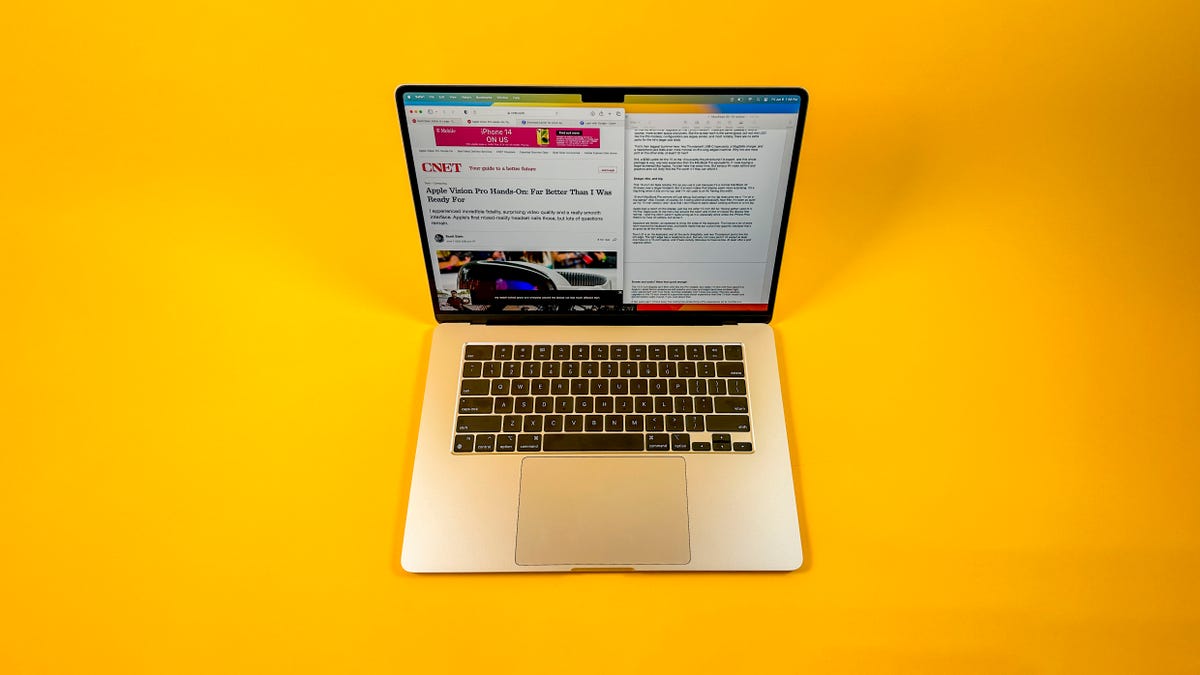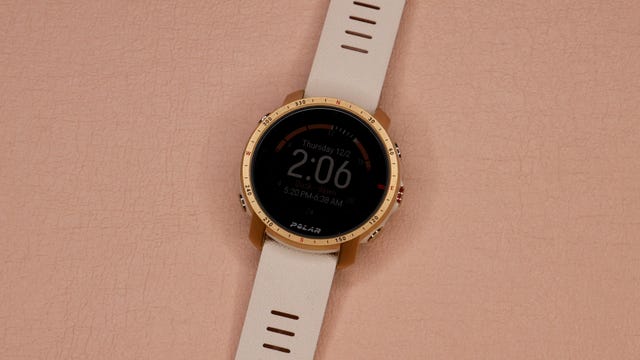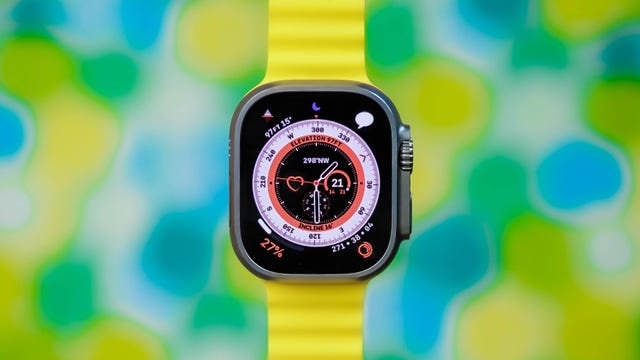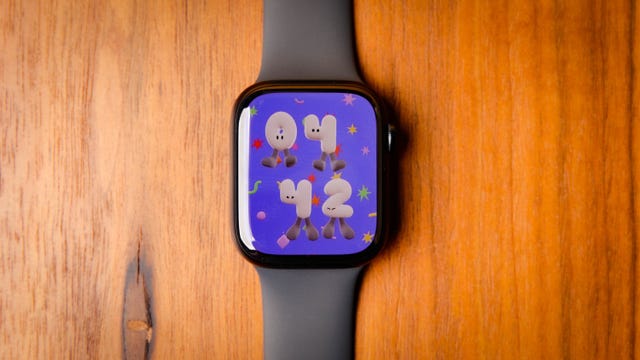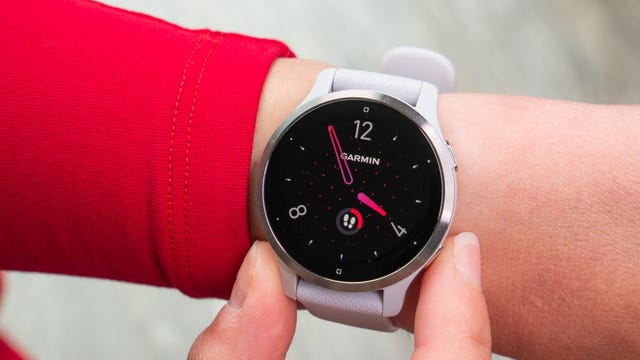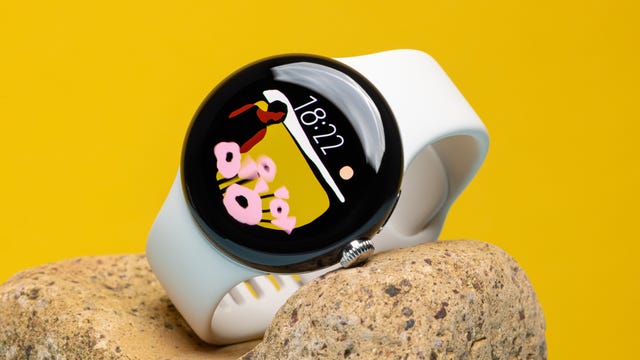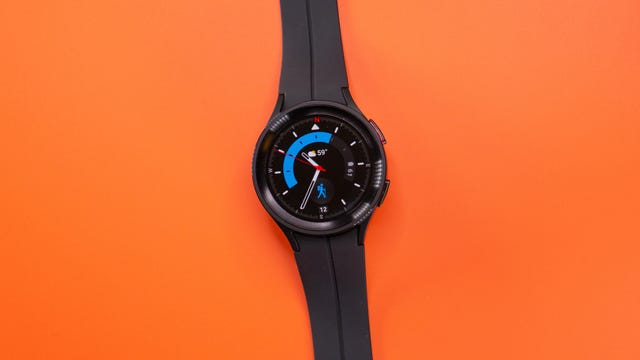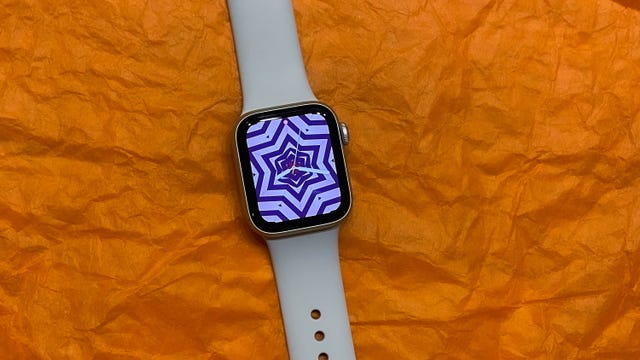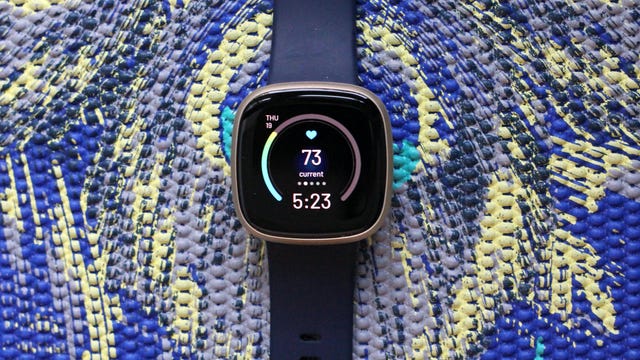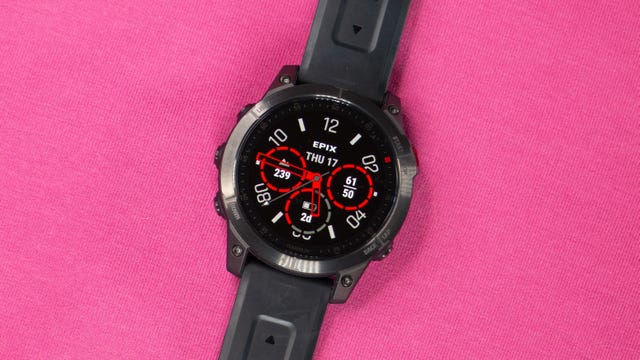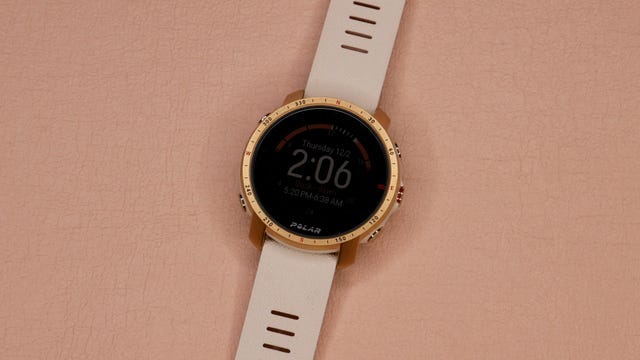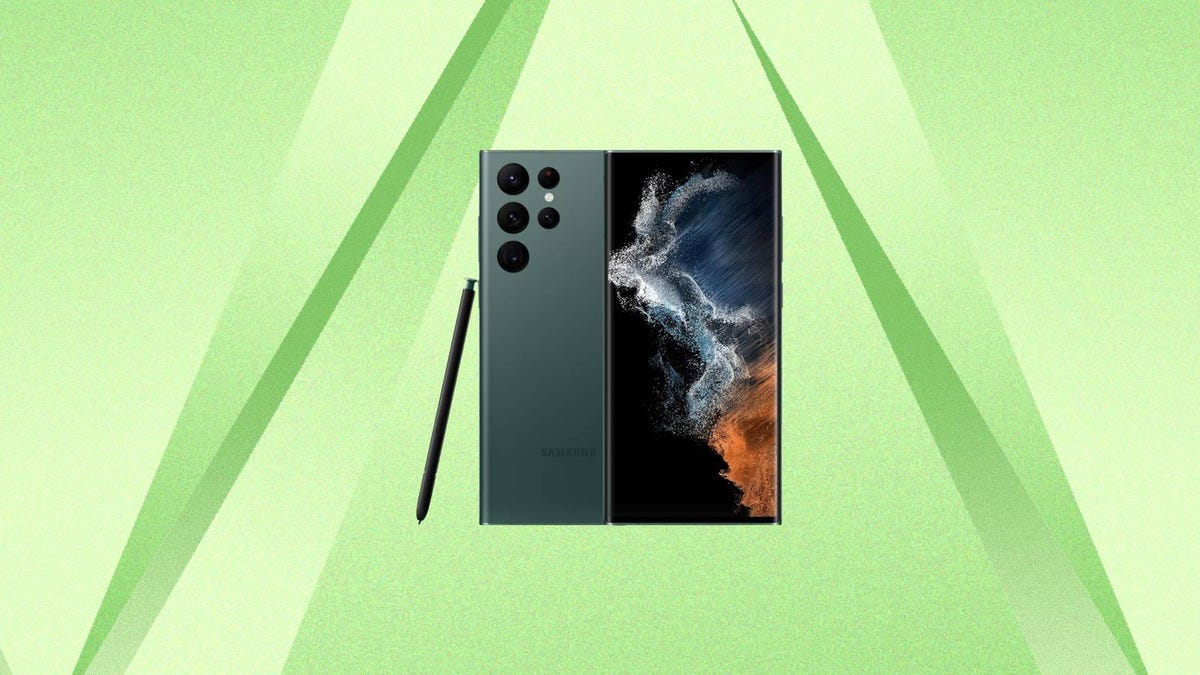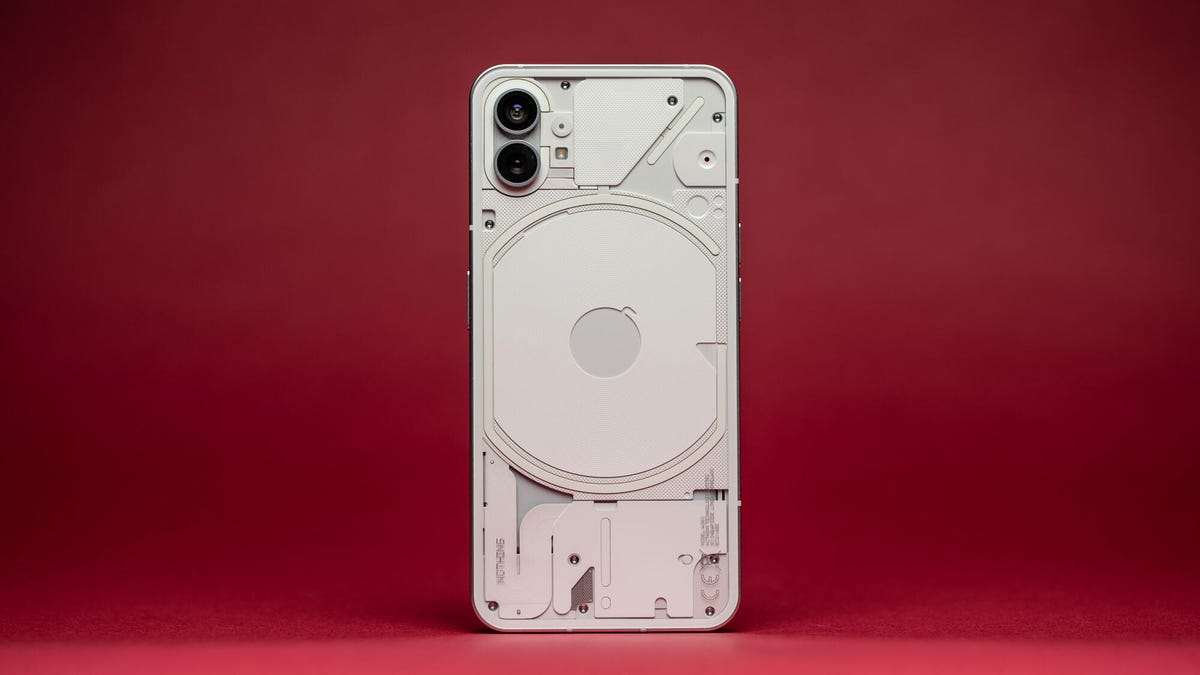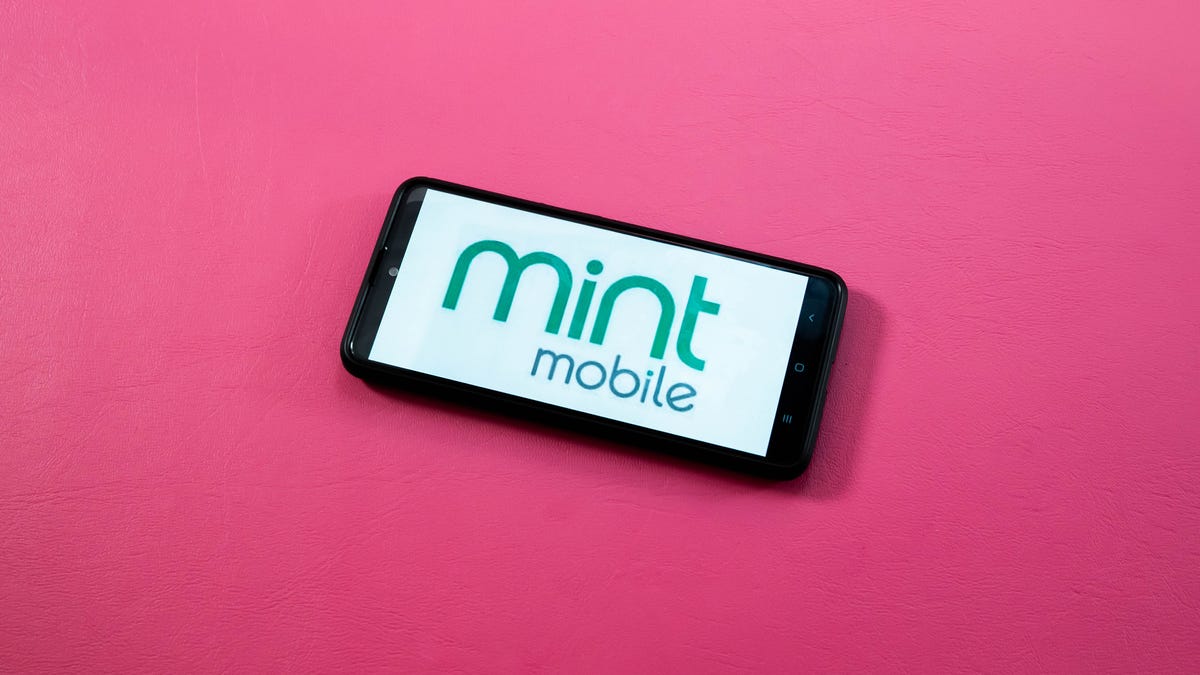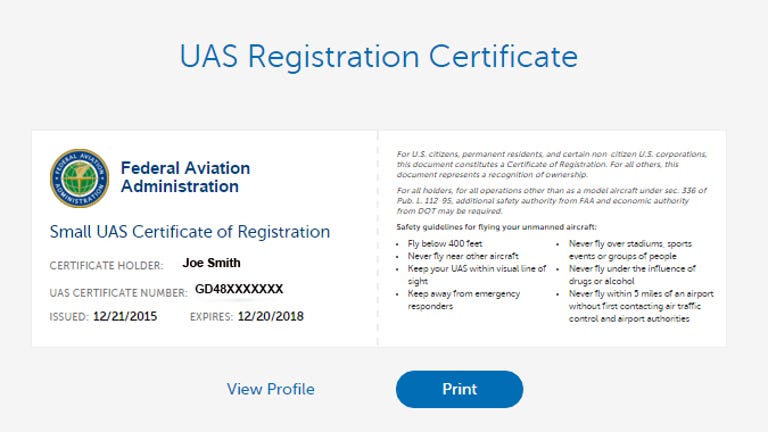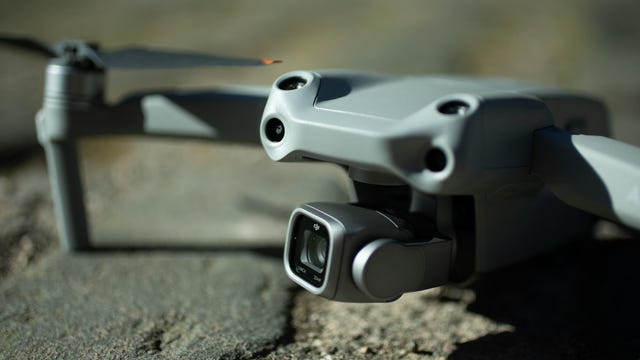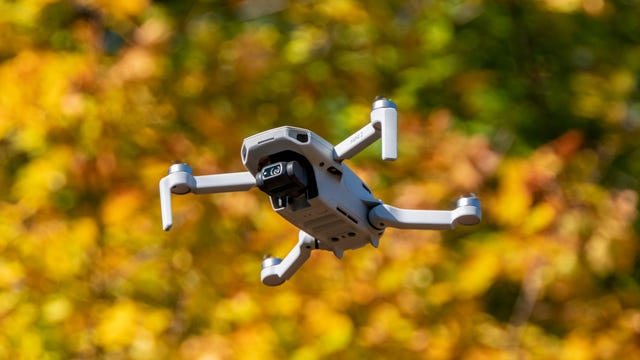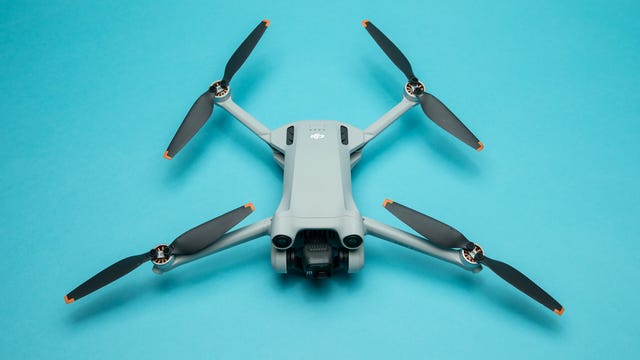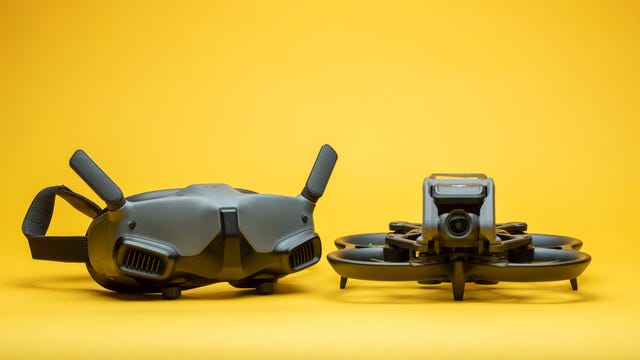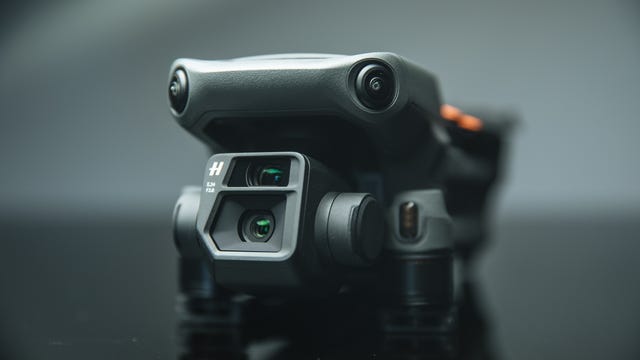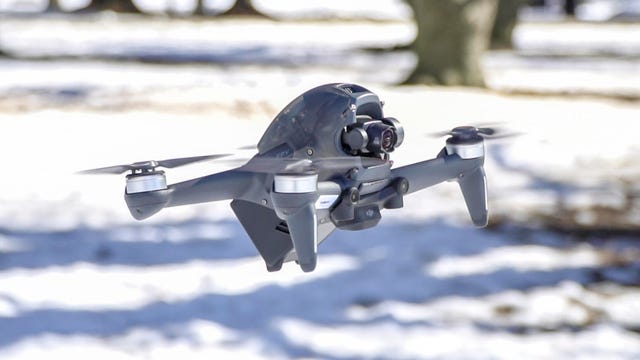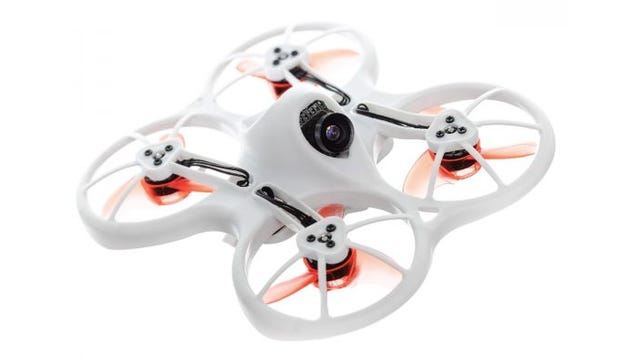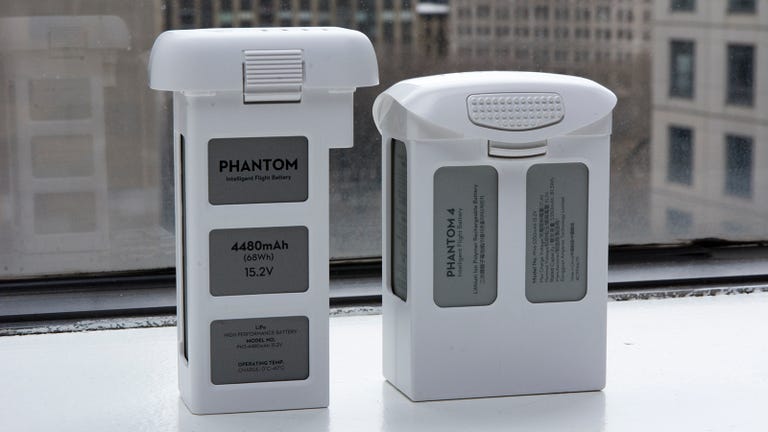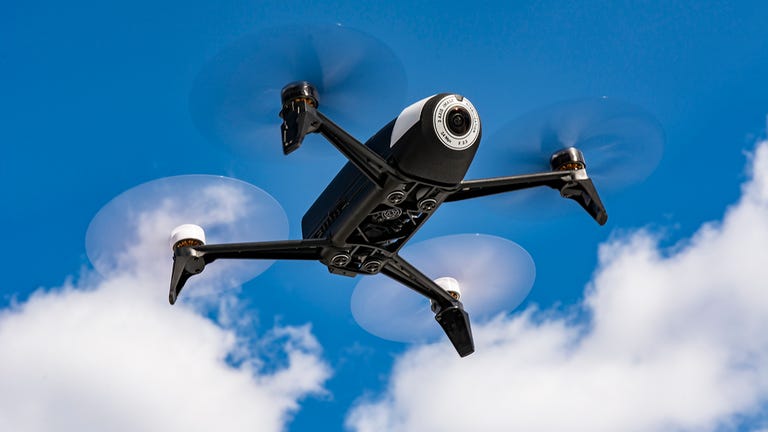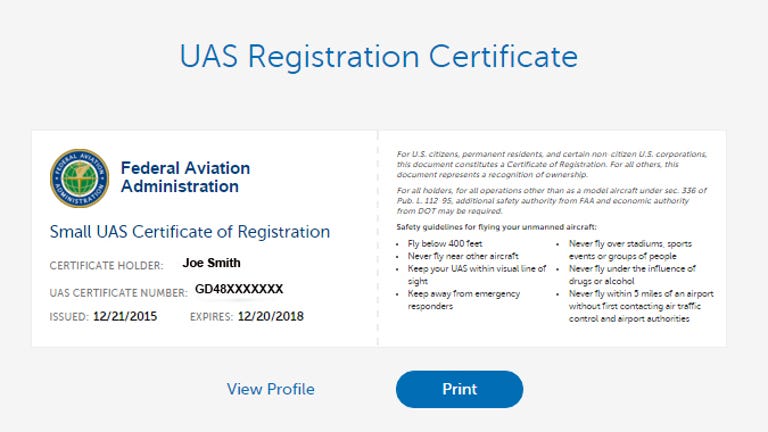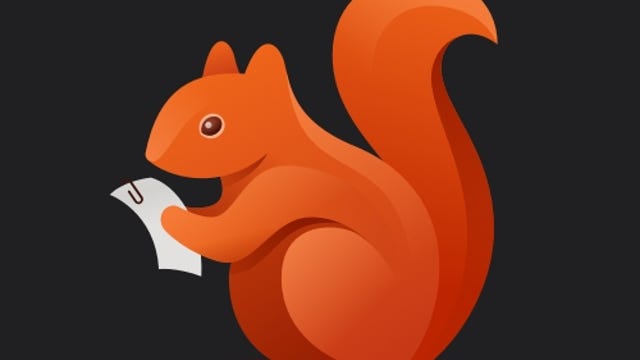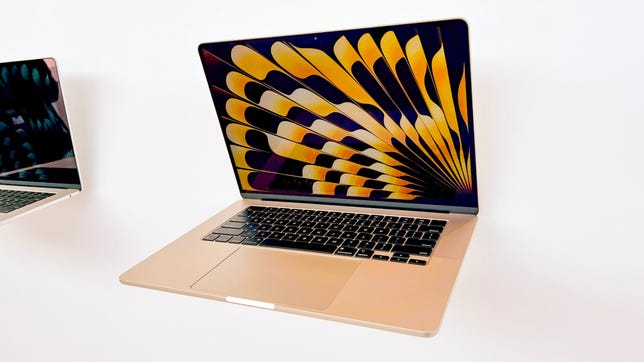
Apple MacBook Air (15-inch)
Like
- Big 15.3-inch screen size
- M2 processor still feels fast
- Costs far less than the Pro laptops
Don’t like
- Very few ports for its size
- No performance boost from the 2022 13-inch Air
Hello, big screen. When I opened the new MacBook Air 15-inch for the first time, it felt weirdly large. I recently bought the MacBook Air 13-inch M2 model, CNET’s pick for the best laptop overall, and I love it. It’s my do-everything computer, and it has the speed and battery life to handle whatever I take on.
No, I don’t need a MacBook Pro, and you probably don’t either. Apple’s M2 processor in the Air already exceeds the requirements of all but the most serious creative pros. And for the first time it’s now available in a roomy 15-inch laptop.

06:34
Putting a larger screen on the thinner, lighter and more affordable Air line is a no-brainer. Apple does this with iPhones, iPads and even to some extent the Apple Watch. It’s the same proposition here: pay a little more, get a bigger screen.
What the 15-inch Air doesn’t do is push the envelope further. A year after the M2 13-inch model, this is basically the same computer with a few tweaks. There’s a default 10-core GPU on the M2, which is an upgrade on the 13-inch version. There are better speakers (or at least more of them). And of course, more screen space and pixels.
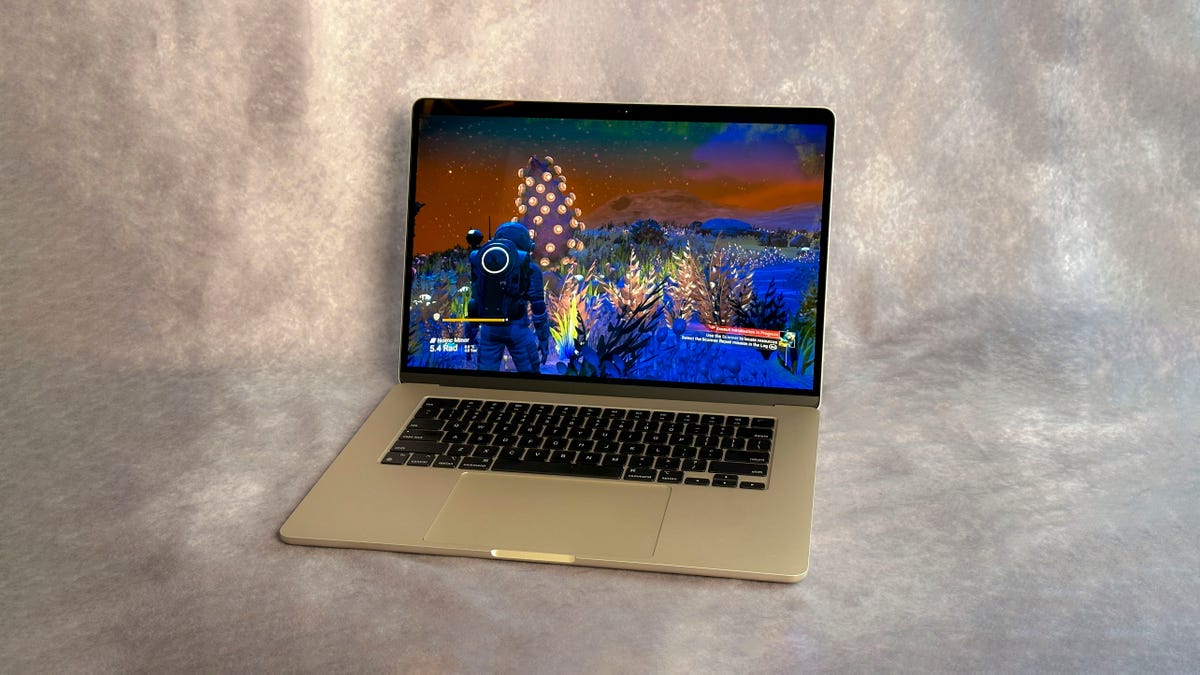
The MacBook Air 15-inch offers a big-screen Mac laptop that isn’t Pro-priced.
But the screen tech is the same (good, but not mini-LED like the Pro models), configurations are largely similar, and most notably, there are no extra ports on the Air’s larger body. That’s the biggest bummer here: two Thunderbolt USB-C type ports, a MagSafe charger and a headphone jack feels even more minimal on this long-edged machine. Why not one more port on the other side, at least? Or two?
The 15-inch Air starts at $1,299 compared with $1,099 for the 13-inch; a $200 uptick is exactly the price bump I’d expect. This whole package is way, way less expensive than the MacBook Pro equivalents. If I were buying a larger-screened Mac laptop, I’d start here first every time. But serious 4K video editors and graphics pros will likely find the Pro worth it if they can afford it.
I wrote this review on the 15-inch Air. I appreciate the extra screen space, and it’s great to have on my desk. But I don’t regret getting the 13-inch version, either.
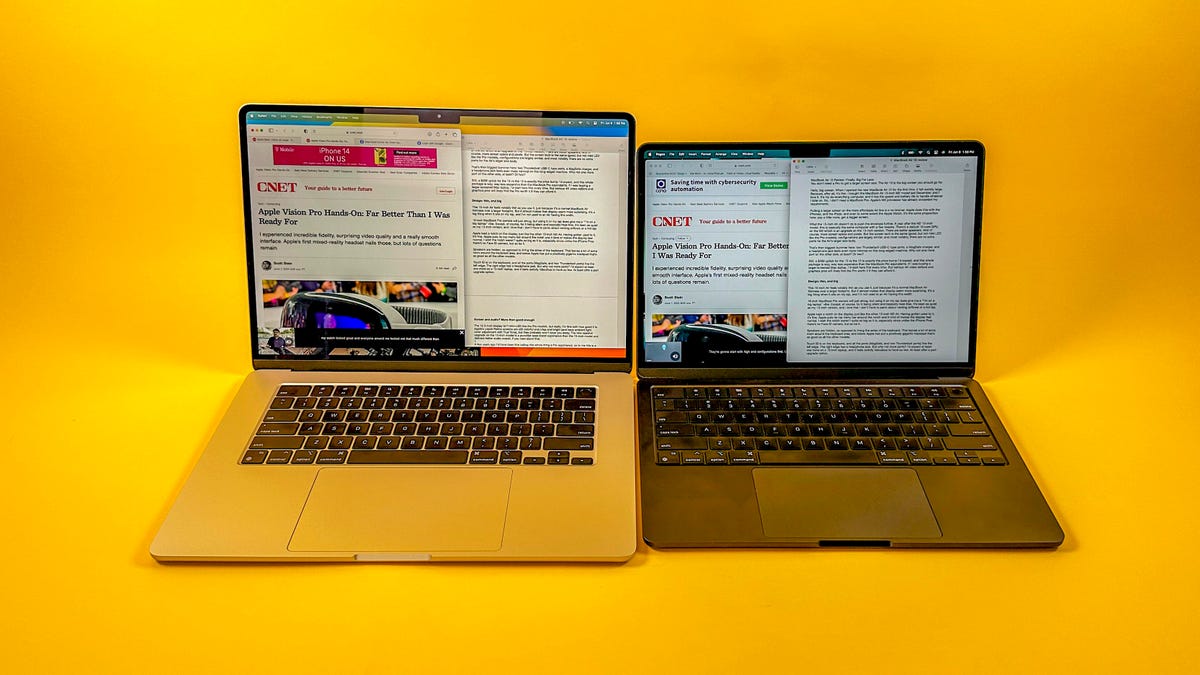
The Air 15 (left) next to the Air 13. Definitely bigger, but the same thickness.
Design: Thin and big
This 15-inch Air feels notably thin as you use it, just because it’s a normal MacBook Air thinness over a larger footprint. But it almost makes that display seem more surprising. It’s a big thing when it sits on my lap, and I’m not used to an Air having this width.
Owners of a 16-inch MacBook Pro will just shrug, but using it on my lap does give me a “I’m on a big laptop” vibe. Except, of course, for it being silent because of its fanless design, and basically heat-free. It’s been as quiet as my 13-inch version, and I love that I don’t have to panic about venting airflows or a hot lap.

The 1080p camera is perfectly fine, just like it was on the 13-inch model. It looks good on Zooms.
Apple kept a camera notch on the display, just like the 13-inch M2 Air. I’m used to it. It’s fine. Apple puts its top menu bar around the notch and it kind of makes the display feel normal. I wish the notch weren’t quite so big as it is, especially since, unlike the iPhone Pros, there’s no Face ID camera, but so be it.
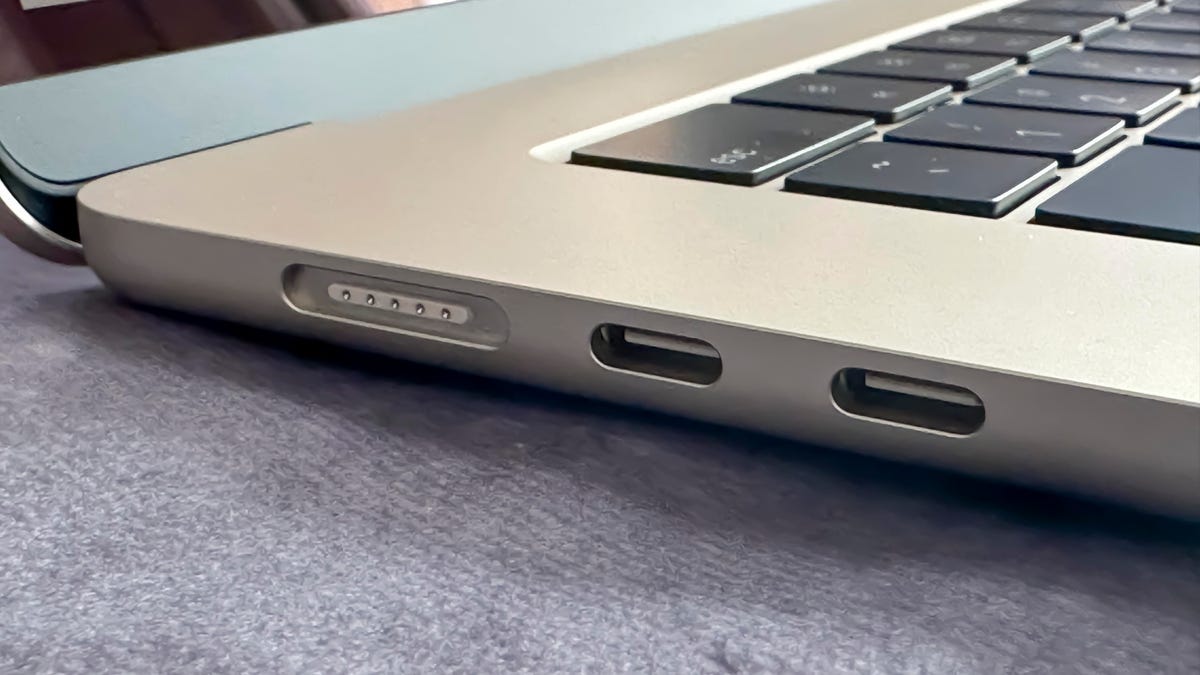
These are the only ports you get, other than a headphone jack. Same as on the 13-inch model.
Speakers are hidden, as opposed to lining the sides of the keyboard. That leaves a lot of extra room around the keyboard area, and below Apple has put a positively gigantic trackpad that’s as good as all the other models.
Touch ID is on the keyboard, and all the ports (MagSafe, and two Thunderbolt ports) line the left edge. The right edge has a headphone jack. But why not more ports? I’d expect at least one more on a 15-inch laptop, and it feels awfully ridiculous to have so few. At least offer a port upgrade option.
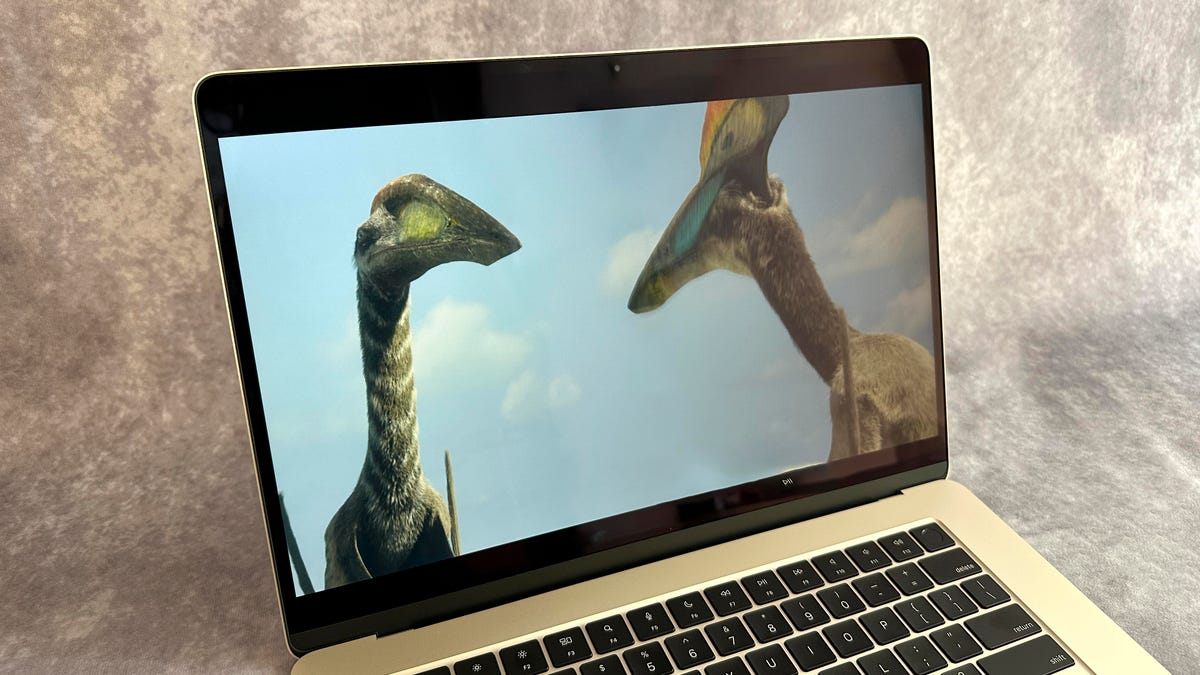
This isn’t mini LED, but it’s perfectly fine for movies and games.
Screen and audio? More than good enough
The 15.3-inch display isn’t mini-LED like the Pro models, but really, I’m fine with how good it is. Apple’s Liquid Retina screens are still colorful and crisp and bright (and have ambient light color adjustment with True Tone), but they probably won’t blow you away. The new speaker upgrade on the 15-inch model is a punchier bass boost experience than the 13-inch model and delivers better audio overall, if you care about that.
A few years ago I’d have called this whole thing a Pro experience, so to me this is a pretty nice Air package overall.

I still like how bag-friendly the 13-inch one is.
Price equation: Worth getting the 15 if you’re spending up for extras
It turns out that the step-up 8GB RAM/512GB storage version of the 15-inch Air is $1,499, while the 13-inch Air’s equivalent is $1,399. Only spending an extra $100 for the larger screen seems like a logical bet for anyone wanting more room to work or something easier on the eyes.
The price gap is $200 for the base model, which also isn’t huge, but I do prefer the 13-inch Air for its portability. I love its compact lap feel and good-enough screen size for my needs. But, putting it next to the 15-inch Air, it’s clear that you can put apps side-by-side more easily on the 15-inch model. My wife looked at both on a table and said she’d prefer the 15 if she were at a desk a lot doing work.

But either way, these laptops are over $1,000 less than the 16-inch-screen MacBook Pro. These are the easiest way to get a great larger-screened MacBook now, and they’re worth it. One note: the 15 now has a year-old M2 processor. Apple’s M2 was only a moderate increase in performance over the breakthrough advance of the M1 before it when it arrived last summer. Will a future M3 take another leap? Maybe you shouldn’t worry. Apple’s speed gains on the M-series chips over the Intel models have been so good that they still feel fantastic.
MacBook Air 15 or 13? Take your pick, either’s fine. At this point in 2023, these MacBook Airs feel like the safest bet in Apple’s laptop lineup.
